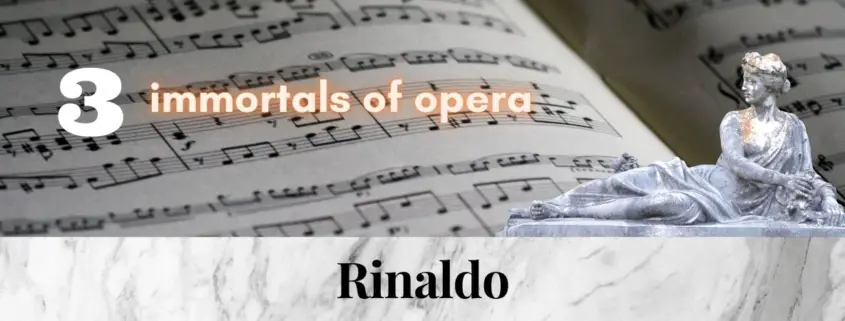3 immortal pieces from Handel’s RINALDO – the best interpretations in YouTube
Rinaldo is Handel’s opera with the most hits and a firework of beautiful arias and stage effects. It is inconceivable that this opera lay dormant for 200 years.
The famous aria “Cara sposa”
Handel said of this aria that it was perhaps the most beautiful he had written. It is one of his great arias for castrati, written for these singing virtuosos with their long breath.
After a chromatic introduction by the strings, the voice begins with a great “messa di voce” (“rise and fall of vocal volume during the sustained tone, ideally from pianissimo to fortissimo,” Wikipedia). This allowed the castrati to showcase their impressive lute volumes. The ensuing notgen must be sung with the greatest legato and chromatically guided tonal changes to create the desolation of the moment.
This is followed by the lamento passage with the repeated “dove sei.” Handel’s lamenti are among his greatest specialties. Among the stylistic elements of these lamenti were these sigh motives. In addition, chromatic tone sequences, dying notes, and resigned pauses create the resigned mood.
We first hear the aria in the interpretation of David Daniels, the famous American countertenor. He sang Rinaldo in Hogwood’s sensational recording together with Cecilia Bartoli in the leading role. His voice touches with naturalness and opulence.
Cara sposa – Daniels
The beautiful serene sea atmosphere
We hear an enchanting aria with elegiac sea mood sung by Eustazio. The role of Eustazio was dropped in the 1731 version and this aria was passed on to Goffredo.
Siam prossimi al porto – Dumaux
Another highlight: “Lascia ch’io pianga”
Lascia ch’io pianga is one of the most famous arias by George Frideric Handel. He composed it already in 1705, transformed it into a lament aria for Rinaldo. Handel managed to write an aria that touches by its simplicity. He wrote the aria in the form of a sarabande, a triple meter with a stretching of the second bar time. The combination with the typical chromaticism of the sequence of notes and the effective ¼ rests result in the famous sighing motive of Handel’s Lamento. We hear this effect right at the beginning.
The aria has been recorded by countless singers; we hear an interpretation by American soprano Marilyn Horne. She dispenses with ornamentation in the first part, which emphasizes the simplicity of the piece. The vibrato is very expressive and her stupendous technique allows her beautiful trills in the middle section.
Lascia ch’io pianga – Horne







Leave a Reply
Want to join the discussion?Feel free to contribute!